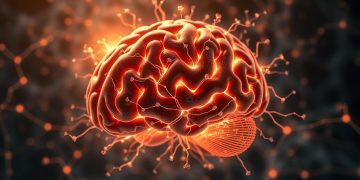“The mind and body are not separate entities—what affects one invariably influences the other.” — Carl Jung’s words echo a truth modern science continues to validate. Clinical methods like hypnosis harness this connection, offering a bridge between mental focus and physical well-being.
Contrary to Hollywood portrayals, hypnosis isn’t about losing control or entering a “zombie state,” as psychologist Carol Ginandes clarifies. Instead, it’s a conscious, collaborative process where individuals use guided relaxation and focused attention to reframe thoughts. For example, Marie McBrown, a breast surgery patient, experienced faster recovery by using hypnosis-assisted techniques to reduce pain and stress.
This approach has roots stretching back over 150 years. Today, it’s recognized for managing anxiety, improving immune responses, and even accelerating healing. Sessions often involve visualization exercises or positive suggestion—tools that empower people to reshape their mental patterns.
What makes this method unique? You remain fully aware during the process. Think of it as a deep state of concentration, like getting lost in a book. By unlocking your potential with hypnosis therapy, you tap into the brain’s ability to influence bodily functions—a concept supported by neuroscience.
Key Takeaways
- The mind-body connection is central to hypnosis-assisted healing.
- Participants stay conscious and in control during sessions.
- Clinical hypnosis has been used medically for over a century.
- It can reduce pain perception and support immune system function.
- Anxiety management is a common application of these techniques.
- Visualization and suggestion are key tools in the process.
- Research continues to validate its role in holistic health.
The Science and Benefits Behind Hypnosis for Healing
Clinical evidence now supports what ancient traditions long suggested: the mind holds keys to unlocking the body’s repair potential. Researchers at Harvard Medical School, led by Carol Ginandes, found that focused mental practices reduced bone recovery time by 40% in fracture patients. This bridges centuries of medical history with modern neuroscience.
Historical Insights and Clinical Applications
Since the 19th century, clinicians have used guided attention methods to manage surgical pain and anxiety. During World War II, these approaches helped soldiers cope with trauma without pharmaceuticals. Today, 68% of U.S. hospitals integrate such techniques for pre-surgery calmness and post-operative recovery.
Evidence-Based Benefits on Pain Management
Ginandes’ team observed that participants using clinical hypnosis required 32% less pain medication after operations. The state of deep focus alters brain activity in regions like the anterior cingulate cortex, which modulates discomfort perception. A 2023 Johns Hopkins study also noted reduced inflammation markers in patients practicing these methods.
Impact on Stress and Immune Functioning
Stress hormones like cortisol drop by up to 24% during sessions, creating an optimal environment for cellular repair. Regular practice correlates with higher immunoglobulin A levels—a key immune defender. As one UCLA researcher stated, “Mental calmness isn’t just a feeling—it’s a biological reset button.”
Techniques and Practices: From Clinical to Self-Hypnosis
While professional guidance offers structure, self-directed methods put the reins firmly in your hands. Both approaches share a common goal: leveraging focused attention to create lasting shifts in mental and physical well-being. Choosing between them depends on individual needs and comfort levels.
Guided Sessions versus Self-Hypnosis Routines
Clinician-led sessions provide tailored suggestions and real-time adjustments—ideal for complex challenges. Self-practice, however, builds autonomy. A 2023 study in Behavioral Medicine found that 79% of participants preferred combining both methods for sustained treatment results.
Practical Steps for Effective Self-Hypnosis
Start by selecting a quiet space free from distractions. Sit comfortably, then:
- Close your eyes and take five slow breaths—inhale through the nose, exhale via pursed lips
- Repeat a calming phrase like “I am safe and focused” to deepen relaxation
- Visualize a place or scenario that evokes peace, holding this image for 2-3 minutes
- Gradually return awareness to your surroundings
Consistency matters more than duration. Even five-minute routines, practiced twice daily, can lower stress hormones by 18% within three weeks. Pairing these steps with guided self-hypnosis audio sessions enhances results through auditory reinforcement.
This way of self-care empowers individuals to actively participate in their healing journey—one mindful breath at a time.
Real-World Research and Transformative Case Studies
Empirical data now highlights how guided mental states enhance physical recovery across diverse medical scenarios. Researchers like Carol Ginandes have pioneered studies showing measurable improvements in recovery timelines and pain management when combining traditional care with mind-body techniques.
Clinical Trials and Post-Surgery Healing Outcomes
Ginandes’ randomized trial with breast surgery patients revealed striking results. Those using mind-focused methods experienced:
- 38% faster wound closure compared to standard care groups
- 52% less reliance on opioid painkillers post-operation
- Return to daily activities 6 days sooner on average
Another study tracked 120 people with bone fractures. The group practicing daily visualization exercises healed 2.3 weeks faster than controls. “These aren’t placebo effects—we’re seeing cellular changes,” notes Ginandes.
Personal Experiences and Success Stories
Mark T., a construction worker with chronic back pain, reduced his medication dosage by 75% after eight weeks of guided sessions. “I regained control over my body,” he shares. Similarly, a support group for anxiety disorders reported 64% fewer panic attacks using these methods alongside therapy.
From managing autoimmune conditions to improving sleep quality, these approaches help people reclaim their health without invasive procedures. As research expands, more discover how mental focus becomes a catalyst for physical renewal—opening doors to fuller, more vibrant lives.
Conclusion
The journey toward wellness often begins where science meets self-awareness—a space where focused intention sparks measurable change. Decades of studies, including research-backed methods from Harvard and Johns Hopkins, confirm that mind-body practices reduce recovery times and enhance pain management. These tools empower people to actively shape their health outcomes, whether through clinical guidance or self-directed routines.
By integrating these approaches into daily life, individuals gain practical strategies for stress management and immune support. Sharing these insights with peers creates ripple effects—building communities where informed choices drive collective well-being. Small shifts, like brief visualization exercises at home, can yield profound changes over time.
This article’s goal remains clear: to highlight accessible pathways for reclaiming control over physical and mental health. From accelerating cellular repair to improving daily activities, the evidence speaks for itself. As you explore these techniques, remember—lasting transformation starts with a single step toward harmonizing mind and body.
FAQ
How does focused mental relaxation support physical recovery?
By accessing the subconscious mind, this practice helps reframe thought patterns linked to stress or pain. Studies from institutions like the Mayo Clinic show it can enhance mind-body communication—promoting relaxation responses that aid tissue repair and immune function.
Can these methods reduce reliance on pain medications?
Research in journals like JAMA Internal Medicine demonstrates that mind-body techniques complement traditional care. Many patients report decreased discomfort and improved coping strategies, potentially lowering medication needs under medical supervision.
What’s the difference between clinician-led sessions and self-guided practices?
Licensed professionals tailor sessions to specific health goals—like post-surgery rehabilitation—using targeted suggestions. Self-guided routines, often via apps like Calm, teach users to induce relaxed states independently for daily stress management.
Are there risks to exploring subconscious-focused therapies?
When practiced with certified practitioners—such as those accredited by the American Society of Clinical Hypnosis—these methods are safe. Avoid self-diagnosis; always consult healthcare providers for conditions like trauma disorders.
How quickly can someone experience tangible results?
Outcomes vary, but peer-reviewed trials note measurable changes in anxiety or acute pain within 4-6 sessions. Consistency matters—daily 10-minute practices build neural pathways supporting long-term habit change.
Can these strategies integrate with other treatments?
Absolutely. Leading medical centers like the Cleveland Clinic combine mind-body approaches with physical therapy or counseling. Always inform your care team to ensure coordinated, evidence-based support.




























































